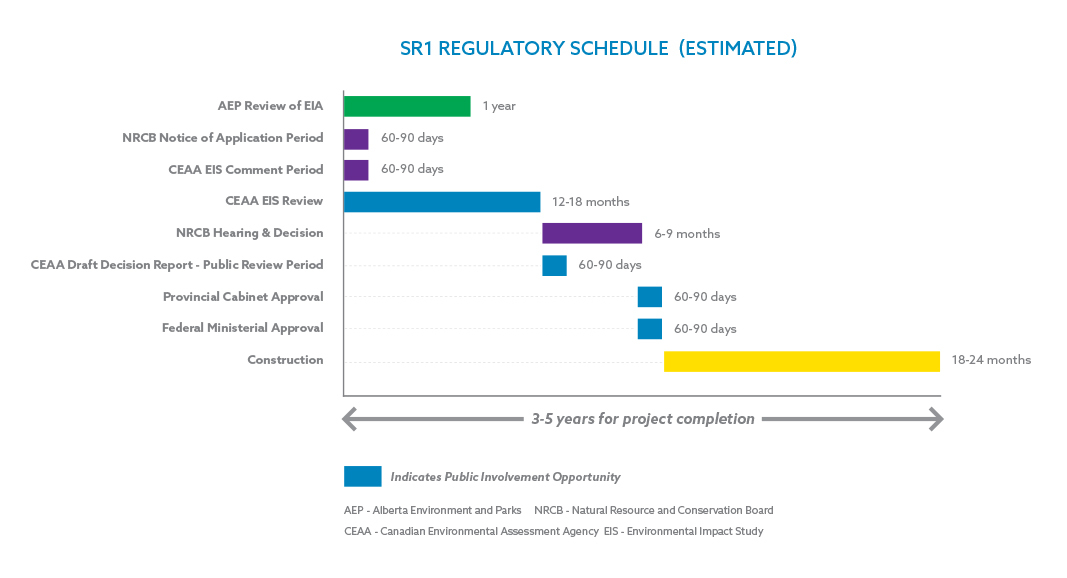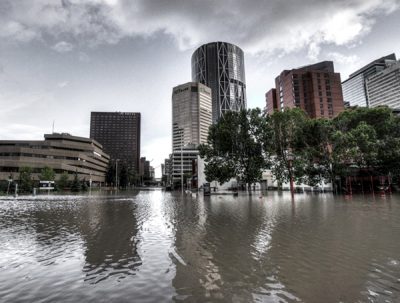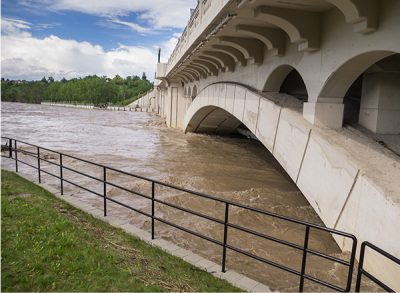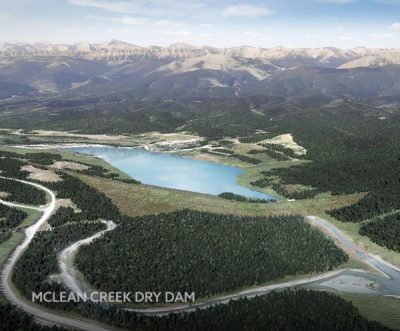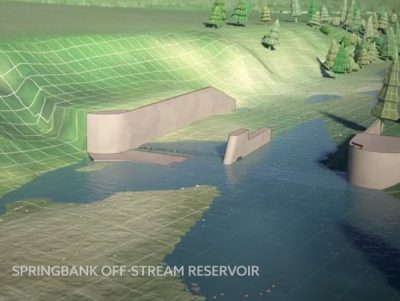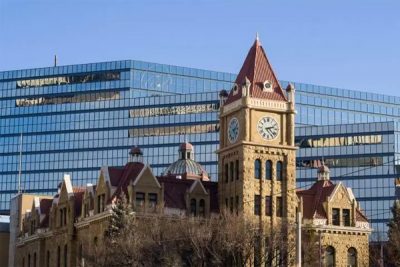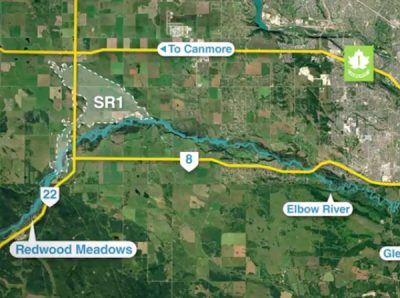Where are we now?
The Springbank Project is in the engineering and design phase, concurrent with seeking necessary regulatory approvals.
The upstream mitigation solution is far from certain and is three to five years away from completion. The success of the Springbank Project is dependent on several remaining, and onerous, steps. The best-case scenario is flood mitigation by 2021. Delays can happen at any point along the way and are threatening to the timely protection of the downtown core.
Now is the moment Calgarians can’t be complacent; our vocal support can make the difference of several flood seasons – and, potentially, our economic future.
Next steps
There will be periods where your input will be most valuable. Expand the next steps to see where your voice can be heard.
Alberta Transportation submitted the Environmental Impact Assessment (EIA) to Alberta Environment and Parks (AEP) this fall. The Assessment is reviewed carefully by multiple disciplines and, if the information provided is deemed sufficient, the project can move to the next step of the regulatory process.
* Public input opportunity
Once the mandated EIA is submitted, the provincial Natural Resources Conservation Board (NRCB) will provide a public notice of the application.
The public is given a brief window of time (expected to be 30-60 days) to provide input to the project as proponents or detractors.
A hearing can be triggered by objections to the project that the NRCB deem as valid, from people directly affected by the project.
* Public input opportunity
The Canadian Environmental Assessment Agency (CEAA) invites public input to the project based on the Environmental Impact Statement (EIS).
The federal government reviews the Environmental Impact Statement (EIS) after the public has had a chance to comment (see the previous step).
* Public input opportunity
As noted earlier, the NRCB process includes a public hearing in cases where the Board has determined that a hearing is in the public interest.
The public hearing allows individual members of the public, coalitions of people having a common position on a project, organized public interest groups, and federal, provincial and municipal representatives to make representations to the Board and to examine the evidence presented by other parties.
Public participation helps ensure the Board has access to relevant and reliable information from different perspectives when determining if a project is in the public interest.
* Public input opportunity
After the Environmental Impact Statement has been deemed sufficient, the Canadian Environmental Assessment Agency (CEAA) drafts a report on the Environmental Assessment. There is another comment period – the last opportunity for public input. At long last, the Environmental Assessment Report is finalized.
The final provincial government approval is triggered when the NRCB issues authorization for the project.
The final federal government approval is triggered when the CEAA issues authorization for the project.
Construction is the last step in a multi-year, regulation-heavy process. However, as we have seen with Calgary’s ring road, even during construction a project is at risk for further delays.
Despite the clear public interest and continuing dialogue with stakeholders, the project has been delayed by motivated opponents.
Steve Allan, Chair of the Calgary Economic Development Board of Directors
Legal opposition has already occurred and is anticipated to continue throughout the regulatory proceedings by vocal opponents to the project including the Don’t Damn Springbank group and the Tsuut’ina Nation.
Construction on the Springbank Project will, hopefully, begin in early 2019. The reservoir will be functionally operational to accommodate a 1:100 flood by late 2020. Full protection to the 2013 flood level would be achieved in late 2021 or early 2022.
Who’s responsible?
Alberta Transportation is responsible for the project development, applying for regulatory approvals and, once received, construction. Once construction is complete, Alberta Environment has responsibility for its management and operations.
What’s been done?
In October 2015, Deltares, a company from the Netherlands, produced a detailed review of two proposed projects: the Springbank Project and McLean Creek Dam (The Dutch know a thing or two about flood mitigation; they have protection up to a 1:1250 level).
Also in 2015, AMEC Environment & Infrastructure submitted a report on flood mitigation options, including in-depth examinations of:
- Hydrological overview
- Geological and geotechnical survey
- Project design
- Existing infrastructure impacts
- Existing landowners
- Environmental and regulatory overview
- Construction cost estimate and schedule
The City has done a lot of work on stuff within our power, within the boundaries of the city, but we really need that upstream work to happen.
Mayor Naheed Nenshi, June 2017 (The Calgary Herald)
What’s left?
Stantec Consulting has been retained for the design and engineering, and the Environmental Impact Assessment (EIA). A completed EIA, slated for this fall, will initiate the environmental regulatory review phase of the process.
The EIA for the Springbank Project is examining a variety of issues, including but not limited to air quality, noise, vegetation and wetland, historical resources, traditional, knowledge and traditional land use.

